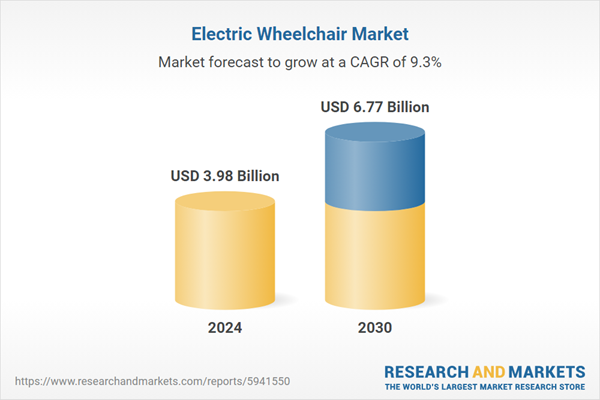Adult is the fastest growing segment, North America is the largest market globally
Speak directly to the analyst to clarify any post sales queries you may have.
10% Free customizationThis report comes with 10% free customization, enabling you to add data that meets your specific business needs.
Key Market Drivers
The increasing global aging population significantly fuels demand within the electric wheelchair market. As individuals live longer, the likelihood of age-related conditions that impair mobility naturally rises, directly increasing the need for assistive devices that restore independence. According to United Nations population projections, in June 2024, the worldwide share of people aged 65 almost doubled from 5.5 percent to 10.3 percent between 1974 and 2024, illustrating a substantial demographic shift towards an older population. This demographic change necessitates a greater supply of electric wheelchairs to support daily activities for a growing segment of consumers facing mobility challenges.Key Market Challenges
The substantial initial acquisition cost of electric wheelchairs represents a significant impediment to the expansion of the global market. This financial barrier directly limits market penetration by making these essential mobility devices inaccessible to a considerable portion of the target demographic. The high upfront investment required for electric wheelchairs poses a substantial hurdle for many potential users, particularly in regions with limited healthcare reimbursement programs or lower average disposable incomes.Key Market Trends
The market for electric wheelchairs is being significantly shaped by the enhanced portability offered through lightweight and foldable designs. This trend addresses a crucial user need for greater convenience, ease of transport, and storage, thereby expanding the accessibility and utility of these devices in daily life and travel. Such designs enable users and caregivers to more easily manage the device for vehicle transfers, public transportation, or compact living spaces. For example, Sunrise Medical introduced the QUICKIE Q50 R Carbon in March 2024, its lightest folding power wheelchair with a transport weight of only 32 lbs, directly reflecting this emphasis on portability.Key Market Players Profiled:
- BioCryst Pharmaceuticals, Inc.
- Ionis Pharmaceuticals, Inc.
- CSL Behring LLC
- Attune Pharmaceuticals, Inc.
- Adverum Biotechnologies, Inc.
- KalVista Pharmaceuticals, Inc.
- Takeda Pharmaceutical Company Limited
- Pharming Group N.V.
- Sanofi S.A.
- Cipla Limited
Report Scope:
In this report, the Global Electric Wheelchair Market has been segmented into the following categories:By Category:
- Adult
- Pediatric
By End-use:
- Hospitals
- Outpatient Facilities
- Homecare
By Region:
- North America
- Europe
- Asia Pacific
- South America
- Middle East & Africa
Competitive Landscape
Company Profiles: Detailed analysis of the major companies present in the Global Electric Wheelchair Market.Available Customizations:
With the given market data, the publisher offers customizations according to a company's specific needs. The following customization options are available for the report:- Detailed analysis and profiling of additional market players (up to five).
This product will be delivered within 1-3 business days.
Table of Contents
Companies Mentioned
- BioCryst Pharmaceuticals, Inc.
- Ionis Pharmaceuticals, Inc.
- CSL Behring LLC
- Attune Pharmaceuticals, Inc.
- Adverum Biotechnologies, Inc.
- KalVista Pharmaceuticals, Inc.
- Takeda Pharmaceutical Company Limited
- Pharming Group N.V.
- Sanofi S.A.
- Cipla Limited
Table Information
| Report Attribute | Details |
|---|---|
| No. of Pages | 185 |
| Published | November 2025 |
| Forecast Period | 2024 - 2030 |
| Estimated Market Value ( USD | $ 3.98 Billion |
| Forecasted Market Value ( USD | $ 6.77 Billion |
| Compound Annual Growth Rate | 9.2% |
| Regions Covered | Global |
| No. of Companies Mentioned | 10 |









